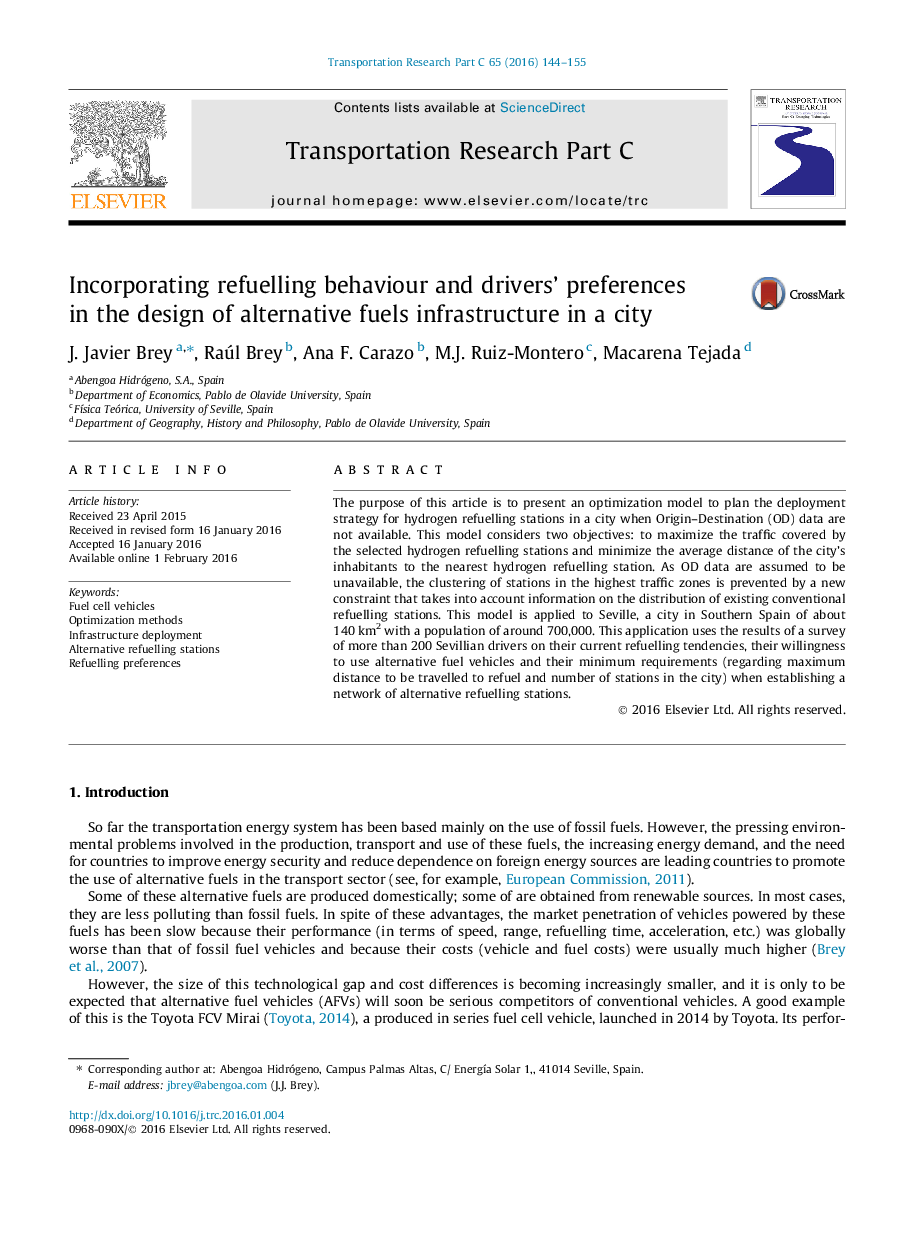| Article ID | Journal | Published Year | Pages | File Type |
|---|---|---|---|---|
| 6936511 | Transportation Research Part C: Emerging Technologies | 2016 | 12 Pages |
Abstract
The purpose of this article is to present an optimization model to plan the deployment strategy for hydrogen refuelling stations in a city when Origin-Destination (OD) data are not available. This model considers two objectives: to maximize the traffic covered by the selected hydrogen refuelling stations and minimize the average distance of the city's inhabitants to the nearest hydrogen refuelling station. As OD data are assumed to be unavailable, the clustering of stations in the highest traffic zones is prevented by a new constraint that takes into account information on the distribution of existing conventional refuelling stations. This model is applied to Seville, a city in Southern Spain of about 140Â km2 with a population of around 700,000. This application uses the results of a survey of more than 200 Sevillian drivers on their current refuelling tendencies, their willingness to use alternative fuel vehicles and their minimum requirements (regarding maximum distance to be travelled to refuel and number of stations in the city) when establishing a network of alternative refuelling stations.
Related Topics
Physical Sciences and Engineering
Computer Science
Computer Science Applications
Authors
J. Javier Brey, Raúl Brey, Ana F. Carazo, M.J. Ruiz-Montero, Macarena Tejada,
